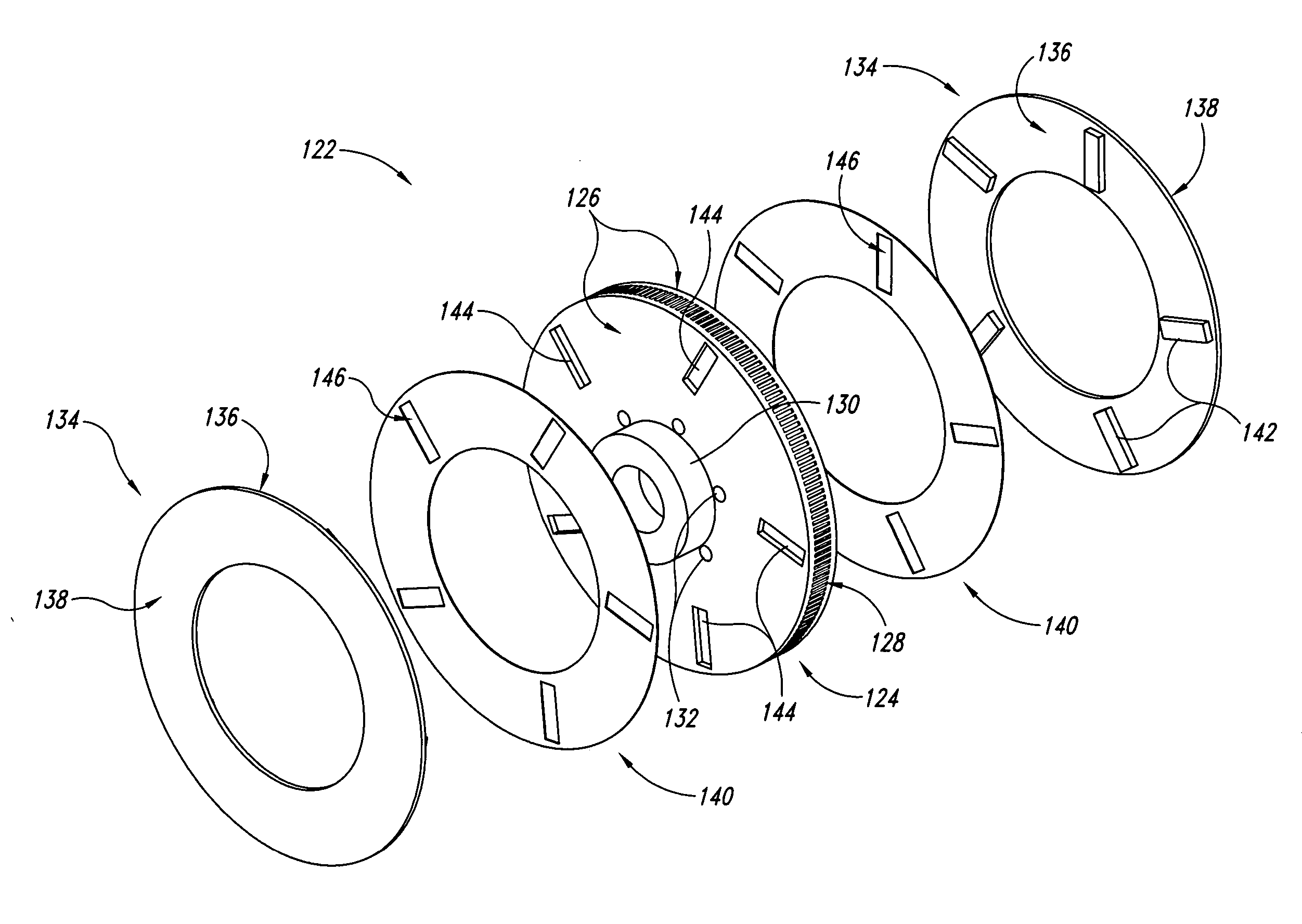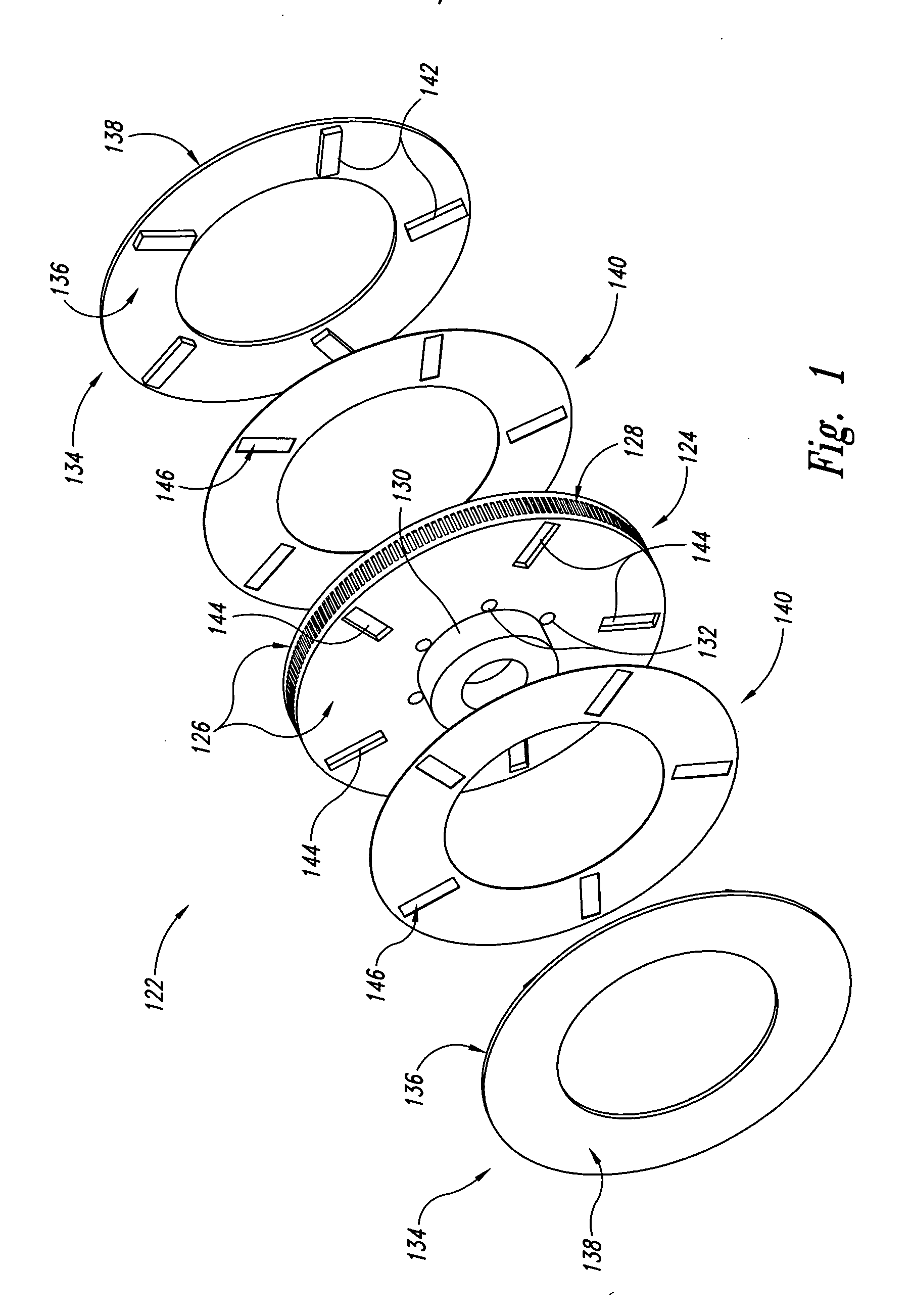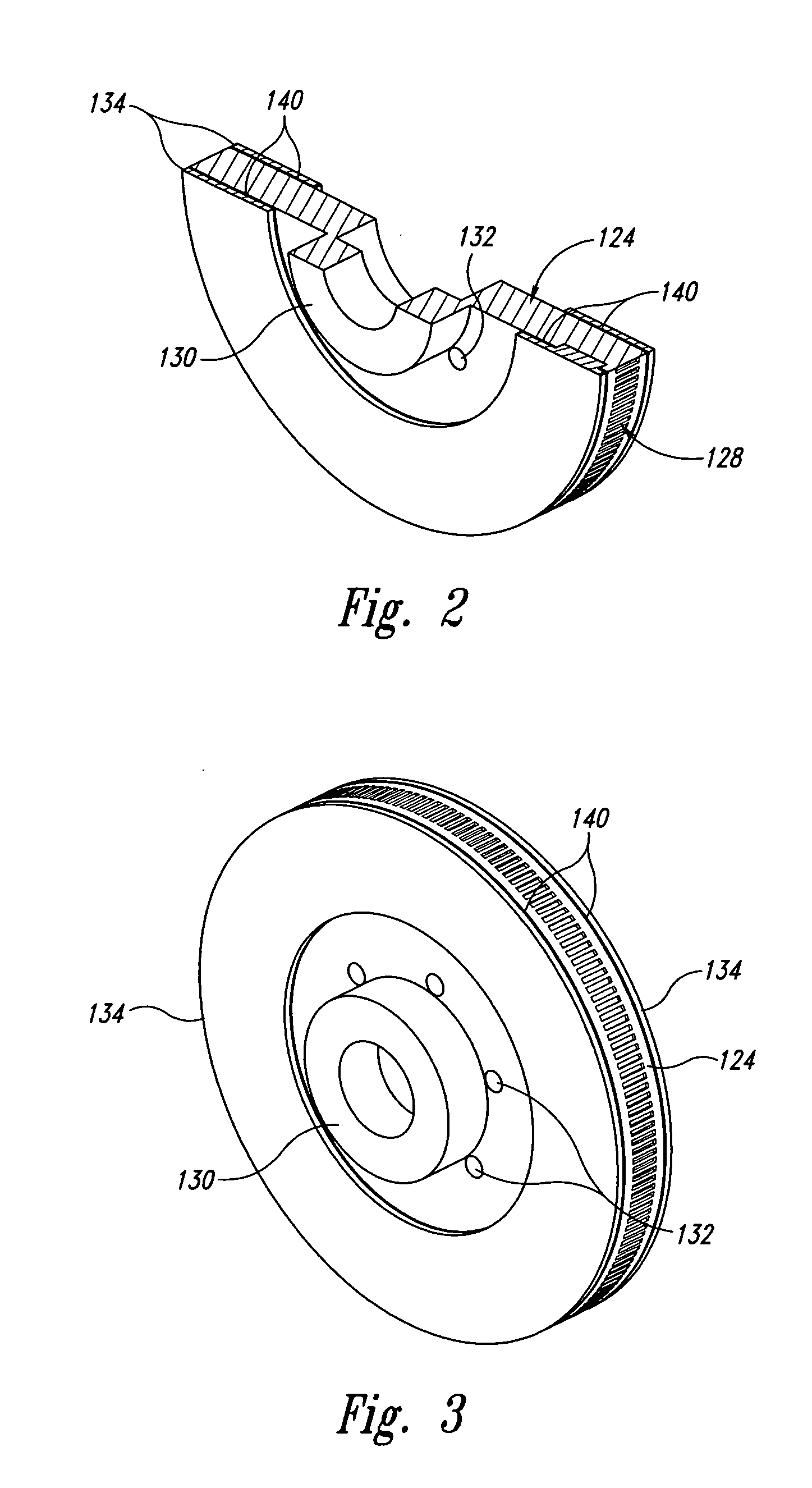Disc brake rotor assembly and method for producing same
a disc brake and rotor technology, applied in the field of vehicle brakes, can solve the problems of insufficient mechanical properties, high temperature strength, hardness and wear resistance typically required for disc brake applications, and significant disadvantages of homogeneous mmc castings, and achieve the effects of optimizing thermal and acoustic behavior, optimizing thermal conductivity, and optimizing acoustic frequency transfer
- Summary
- Abstract
- Description
- Claims
- Application Information
AI Technical Summary
Benefits of technology
Problems solved by technology
Method used
Image
Examples
example 1
Manufacturing of Composite Disc Rotors Using a Hydraulic Press and Induction Welding of Components Aligned Under Pressure
[0067] With reference to FIG. 1 and FIG. 4, a hydraulic press (pressure clamp) with a minimum of 15-ton capacity is used in the final assembly of components aligned or stacked in the following order: wear plate 134 (with interior surface 136 and projections 142 facing the bonding layer), bonding layer 140, outside surfaces of center rotor section 126, bonding layer 140, and wear plate 134 (with interior surface 136 and projections 142 facing bonding layer).
[0068] Alternatively the bonding layer 140 is flame-sprayed onto the interior surface 136 of the wear plates prior to alignment of the sprayed wear plates and the center rotor section.
[0069] Optional elements such as sensor devices, sensor materials or heat transfer-enhancing materials (e.g., sodium metal or carbon graphite foam) are placed into conforming recessed cavities 144 of the center rotor section as ...
PUM
 Login to View More
Login to View More Abstract
Description
Claims
Application Information
 Login to View More
Login to View More - R&D
- Intellectual Property
- Life Sciences
- Materials
- Tech Scout
- Unparalleled Data Quality
- Higher Quality Content
- 60% Fewer Hallucinations
Browse by: Latest US Patents, China's latest patents, Technical Efficacy Thesaurus, Application Domain, Technology Topic, Popular Technical Reports.
© 2025 PatSnap. All rights reserved.Legal|Privacy policy|Modern Slavery Act Transparency Statement|Sitemap|About US| Contact US: help@patsnap.com



